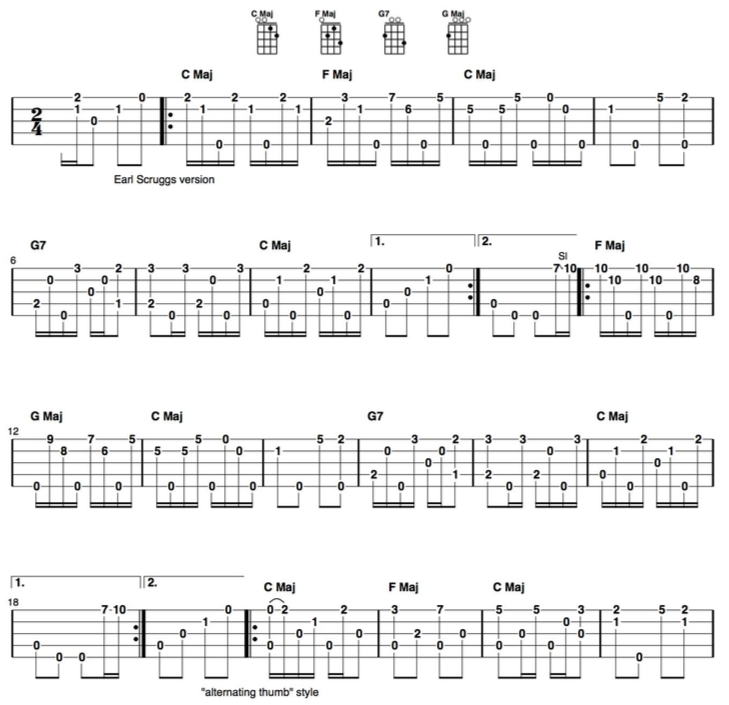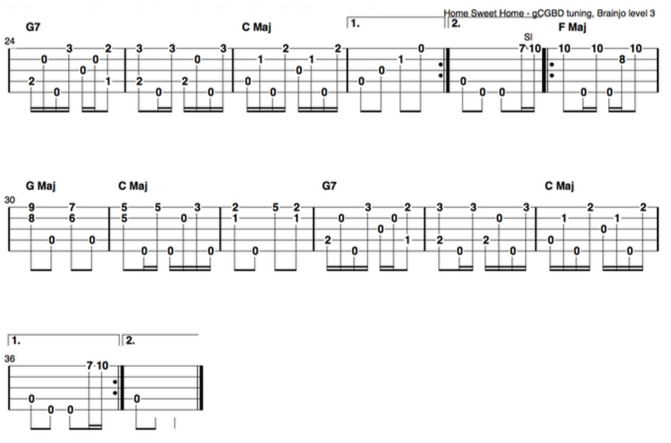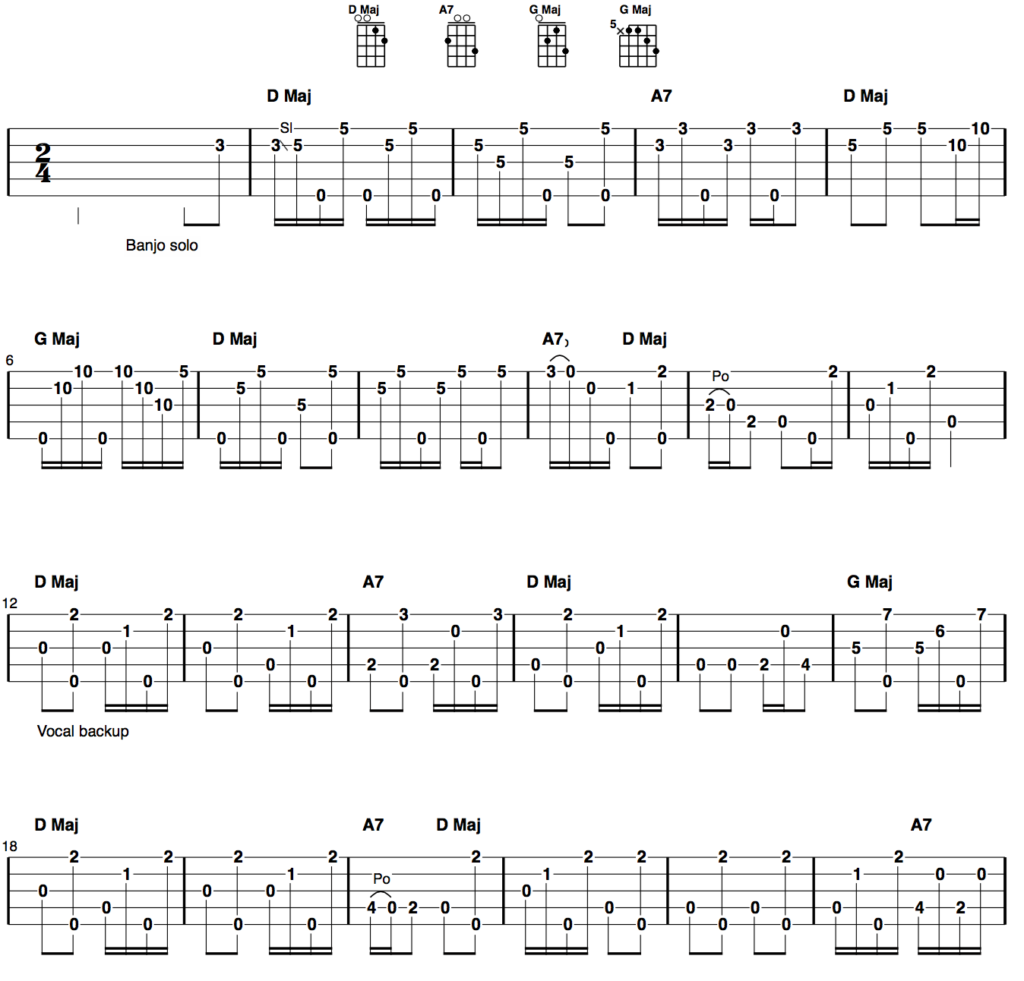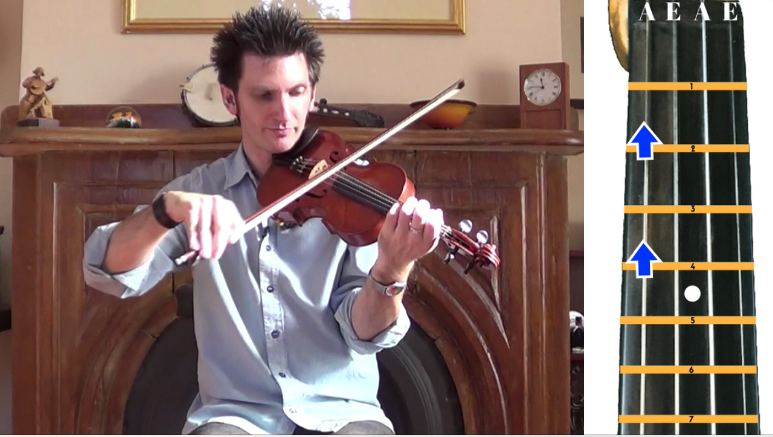Click on the button below to get the PDF download for this tab delivered to you, and get a new song and tab delivered to you every week!
It’s probably not a stretch to say that this week’s song changed my life. It’s been well over a decade, but I still remember where I was when I first heard it.
I was in my car, listening to Flatt & Scruggs’ landmark album Foggy Mountain Banjo for the first time.
It wasn’t long after I’d received my first banjo – a Christmas gift from my family. I’d messed around on it a bit over the holidays, and then life had gotten in the way. The banjo was gathering dust.
Fortunately, as part of my banjo tuition, I’d acquired some classic banjo albums for in the car listening. And I’d just inserted Foggy Mountain Banjo into the CD player (this was back in the old days).
The first track was Groundspeed, as those familiar with the album will know. It’s a great tune, one that showcases Earl Scruggs’s technical mastery. But while I’m sure I enjoyed it, the memory of that first listen is long gone.
The second track, on other hand, was a different story.
That track was Home Sweet Home, this week’s song. It left such an impression that I still remember precisely where I was – making the left turn into my neighborhood – when it came on.
I thought it was one of the greatest sounds I’d ever heard. I had no idea a banjo could sound like that.
And I had to learn it. It was just the spark of motivation I needed to pick up the 5-string again, to transform my interest into an enduring obsession.
Life would never get in the way again.
Since that time there have been a handful of tunes I’d put in the same category. Ones that, the moment I heard them, I thought: I have to play that.
But this one was the first.
A Note About the Arrangement
My first couple times through I play this one as Earl did. Naturally.
The last couple times through I mix in a bit of what might be described as “Travis style” picking – one heard more commonly on the guitar – in which the thumb alternates back and forth on the two low strings to emulate the “boom chuck” backup pattern for a rhythmic foundation.
As such, it’s a pattern that lends itself a bit better than Scruggs style (which tends to sound best when played with other musicians) to solo picking and vocal backup. The lowered bass string in the tuning used for this song, gCGBD or “drop C,” also helps provide a more robust bottom end than standard G.
As it turns out, the first time I heard anyone play Travis style on a banjo was Mike Seeger, the source for last week’s Song of the Week (and another source of material I just had to learn how to play).
(RELATED: If you’re interested in learning all styles of up-picking in a way that’s aligned with how the grown up brain learns music, then you may enjoy the Breakthrough Banjo course for fingerstyle banjo. Click here to learn more.)
Below you’ll find the clawhammer version for this song (click here if you’d like the CLAWHAMMER TAB).
Home Sweet Home – clawhammer banjo
Home Sweet Home (3 finger banjo version)
gCGBD tuning, Brainjo level 3



Notes on the Tab
In this arrangement, I’ve tabbed out the part I play in the banjo “solo,” as well as the vocal backup I play on the banjo while singing.
For more on reading tabs in general, check out this complete guide to reading banjo tabs.
Recent Banjo Songs and Tabs of the Week:



 As long as there have been banjos to be picked, people have been coming up with all sorts of inventive and wonderful sounding ways of picking them.
As long as there have been banjos to be picked, people have been coming up with all sorts of inventive and wonderful sounding ways of picking them.





